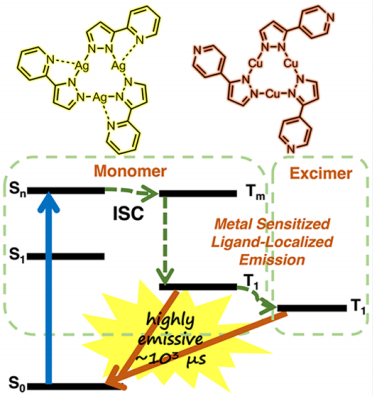
Li-Rui Xing,§ Zhou Lu,§ Mian Li, Ji Zheng, and Dan Li*

Abstract: The increased attention to luminescent copper(I) complexes, mostly mononuclear and dinuclear ones, in the past few years was mainly due to the new pathways established in the intersystem crossing (ISC) for highly efficient singlet/triplet harvesting, which showed great potential in light-emitting devices. Governing the photophysical processes of planar cyclic trinuclear complexes is more challenging owing to the rich intra- and intermolecular metal-metal interactions involved, but new opportunities also accompany this. Herein reported is a hidden route to the ultra-long-lived, highly efficient phosphorescence of cyclic trinuclear two-coordinate CuI-pyrazolate complexes through pushing the unfavorable metal-to-ligand charge transfer events to the high-lying ISC pathways. Moreover, an anomaly of much higher quantum yields of a trinuclear AgI-pyrazolate complex relative to its CuI analogue is observed.




